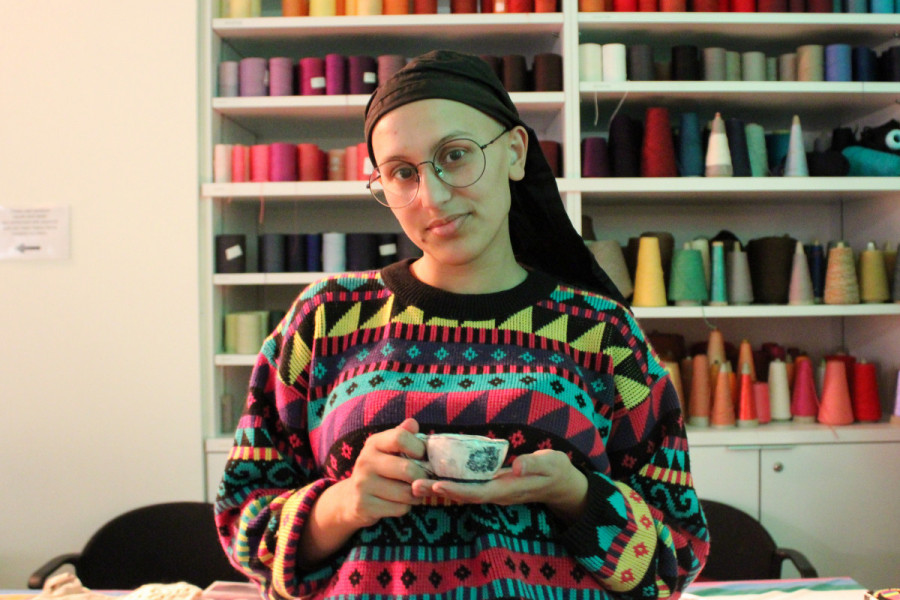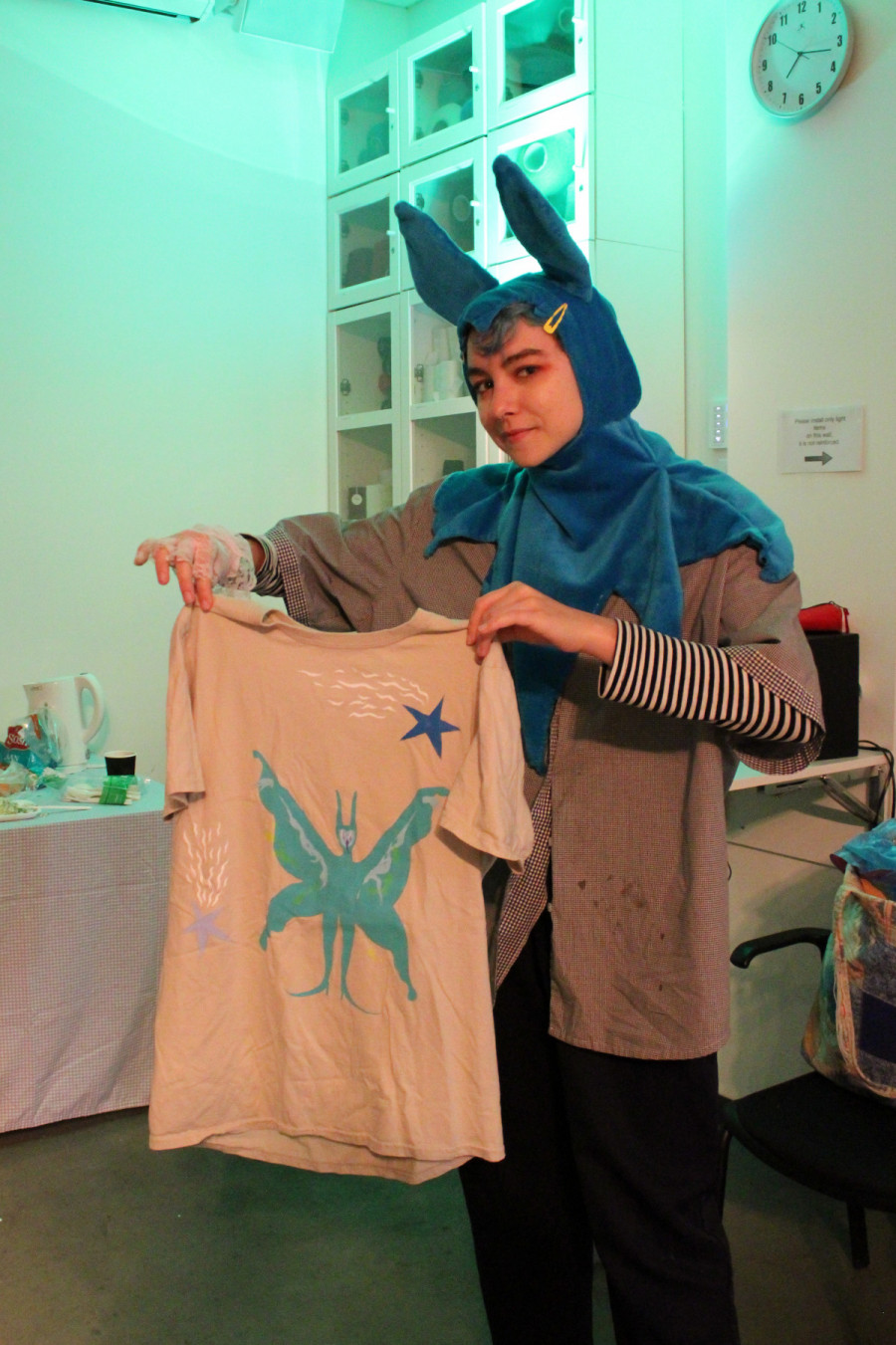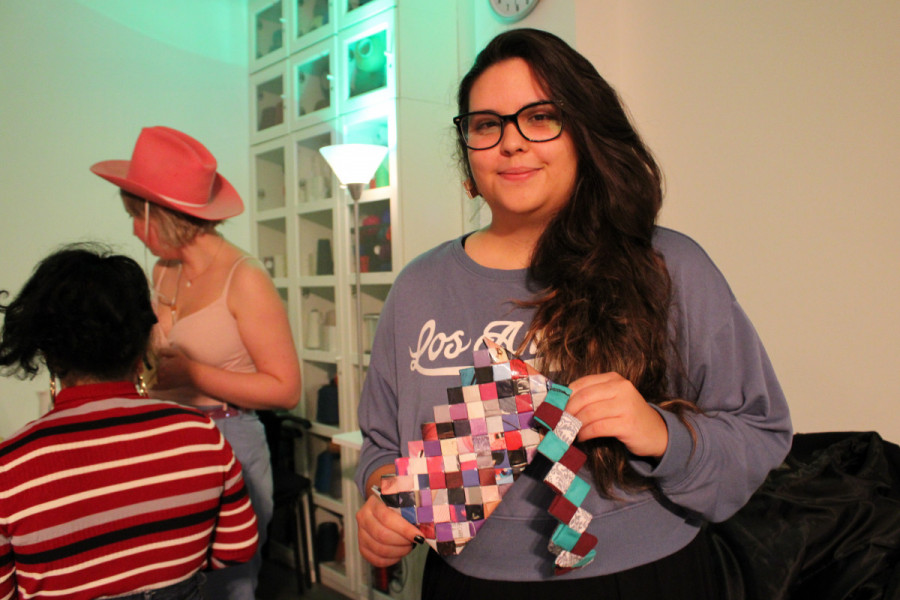Concordia Fibres Students Explore the Creative Potential of Textile Arts
“Try to Think What Materials You Are Interacting With Everyday”
As artist Teddy Desmarais said, fibres are “limitless.”
The Concordia film animation and fibres and material practices student displayed some of their fibre artworks at the Fibres Student Mixer on Oct. 30.
Most people don’t think of fibres when they think of art—there is a whole tradition of crafts like knitting, sewing, felting, crocheting, basket weaving and many more, that haven’t necessarily been acknowledged by contemporary art practice as a form of art.
The exact definition of fibres remains vague. Fibres can be anything from wool to repurposed clothing to recycled paper.
Ultimately, a loose definition of fibres is for the better because the goal is to explore and discover the untapped potential of fibres in the artistic world.
Desmarais brought hand-painted shirts, and prints featuring a zombiesque fencer they hand-sewed standing in a graveyard.

Most noticeably, Desmarais was wearing a fluffy blue rabbit hat—part of their Halloween costume. It took them four hours to hand sew the hat and three days to complete the bodysuit.
This illustrates one of fibres defining characteristics: It’s incredibly time-consuming and meticulous.
“Fibres takes a lot of time and patience,” said Desmarais. “It takes a lot of time to knit something, for example. You can’t really guestimate how long it’s going to take you.”
But Desmarais has always loved fibre-work not despite but because of this. To them, handmade textile work brings out human warmth.
“It’s a very tender feeling when you know what you’re making, and how to make it, or how something is made,” said Desmarais.
Their favourite thing to do is to sew costumes for puppets.
“I like a lot of different things, but puppetry is an assimilation of so many different things,” said Desmarais. “There’s costume, humour, performance, set design. It kind of has everything and you really influence the environment and space that you’re in.”
“It’s a very tender feeling when you know what you’re making and how to make it or how something is made.” — Teddy Desmarais
Maria Escalona, who majors in fibres and material practices at Concordia also showcased her work at the Fibres Student Mixer. She was herself unaware that fibres were part of the artistic world before beginning her studies.
When she went to Concordia’s open house, she “realized [she had] been doing fibres artwork without knowing it.”
Before she had even started studying fibres, Escalona was making hand-woven headbands made out of reused textiles—a technique she learned from YouTube tutorials.
“I discovered the techniques to make these headbands a few years ago and when I saw it was related to the fibres program, I thought, ‘Perfect, I want to do this.’”
Escalona brought a wide array of her handmade crafts that use this same technique: earrings, wallets, and of course, the headbands. They are made out of newspaper, magazine pages (some of them from The Link), food packaging, and scraps of fabric.

She thinks most people don’t think of fibres when they think of art because they see textiles and fabrics as having a very commercial use.
“We are trying to change that and give [fibres] a more meaningful use,” said Escalona. “We think about where the textiles come from, who is involved in the process, what’s the history of the materials we use every day. We are thinking of the fabric, paper and materials we use daily with an artistic twist.”
One way Escalona is trying to rethink the way we use fibre materials is by using weaving to make sculptures.
“I’ve been trying to do more sculptural things with weaving so I incorporate them in metal structures to give them a more building architectural look,” said Escalona. “I incorporate weaving, which is a very lazy material, with sculpture, which is very sturdy.”
For Escalona, the hardest part about fibre artwork is “to get away from those very commercial materials, materials that are not fair trade nor eco-friendly.”
It’s a challenge because these materials are everywhere and they’re cheaper. Nevertheless, she tries her best to think of ways to be more fair to the planet and to the people who produce the materials.
Ultimately, Escalona thinks fibre artwork is about rethinking the way we see textile materials.
“Try to think what materials you are interacting with everyday,” said Escalona.
“Each one of them has a history. Cotton has a history. Polyester has another history. And they are all interesting. We can maybe think of other ways to use them, not only in fashion and not throwing them away when they’re no longer used for their original purpose.”



_600_832_s.png)
